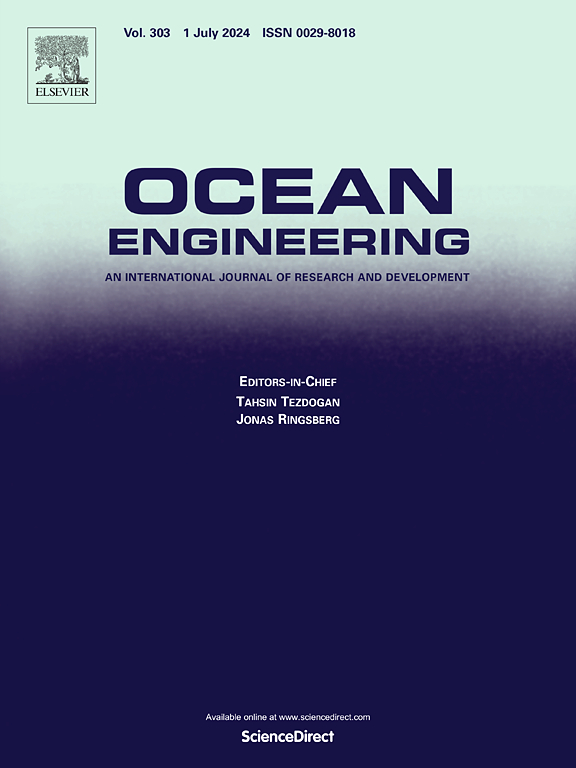Flow characteristics of underwater supersonic gas jets formed by the scarfed nozzle
IF 4.6
2区 工程技术
Q1 ENGINEERING, CIVIL
引用次数: 0
Abstract
Underwater supersonic gas jets formed by the scarfed nozzle are commonly found in underwater propulsion systems. The investigation is conducted using both experimental and numerical methods. High-speed imaging and image processing techniques are employed in the experiments, and the Volume of Fluid (VOF) model is used in the numerical simulations. The effects of different nozzle expansion states on the jet flow characteristics are studied. The study focuses on the flow dynamics and instabilities of the underwater gas jets, considering two stages of jet formation: the initial gas bubble and the stable conical structure. It is found that asymmetric characteristics appear in the jet morphology, pressure and gas-liquid interface oscillations, and thrust of the scarfed nozzle. Significant pressure oscillations occur in the initial stage. However, the gas-liquid interface continues to exhibit oscillations with asymmetric behavior, which weakens as the inlet pressure increases. The deflection characteristics of the thrust direction are heavily influenced by the non-axisymmetric geometry and lateral forces exerted on the asymmetric wall of the nozzle. These findings contribute to a more profound comprehension of the intricate mechanism of underwater gas jets of the scarfed nozzle, thereby facilitating the development of more efficient and stable underwater propulsion systems.
斜缝喷管形成水下超音速气体射流的流动特性
水下超音速气体射流是水下推进系统中常见的一种由斜形喷嘴形成的气体射流。研究采用了实验和数值方法。实验采用高速成像和图像处理技术,数值模拟采用流体体积(VOF)模型。研究了不同喷嘴膨胀状态对射流特性的影响。研究了水下气体射流的流动动力学和不稳定性,考虑了射流形成的两个阶段:初始气泡阶段和稳定的锥形结构阶段。结果表明,斜切喷嘴在射流形态、压力、气液界面振荡、推力等方面均表现出非对称特征。在初始阶段会出现明显的压力振荡。然而,气液界面继续表现出不对称的振荡行为,这种振荡随着进口压力的增加而减弱。非轴对称几何形状和施加在非对称壁面上的侧向力对推力方向的偏转特性影响很大。这些发现有助于更深刻地理解斜形喷管水下气体射流的复杂机理,从而促进更高效、更稳定的水下推进系统的开发。
本文章由计算机程序翻译,如有差异,请以英文原文为准。
求助全文
约1分钟内获得全文
求助全文
来源期刊

Ocean Engineering
工程技术-工程:大洋
CiteScore
7.30
自引率
34.00%
发文量
2379
审稿时长
8.1 months
期刊介绍:
Ocean Engineering provides a medium for the publication of original research and development work in the field of ocean engineering. Ocean Engineering seeks papers in the following topics.
 求助内容:
求助内容: 应助结果提醒方式:
应助结果提醒方式:


